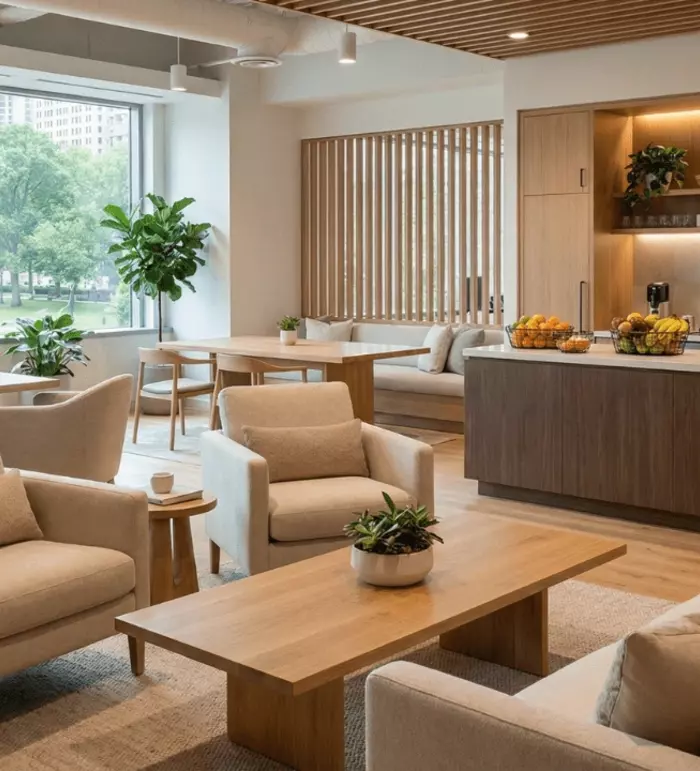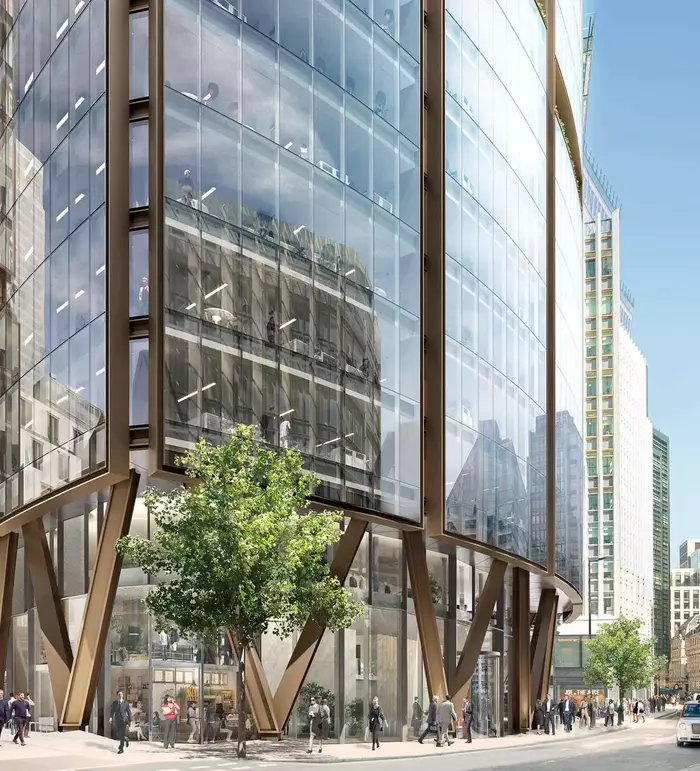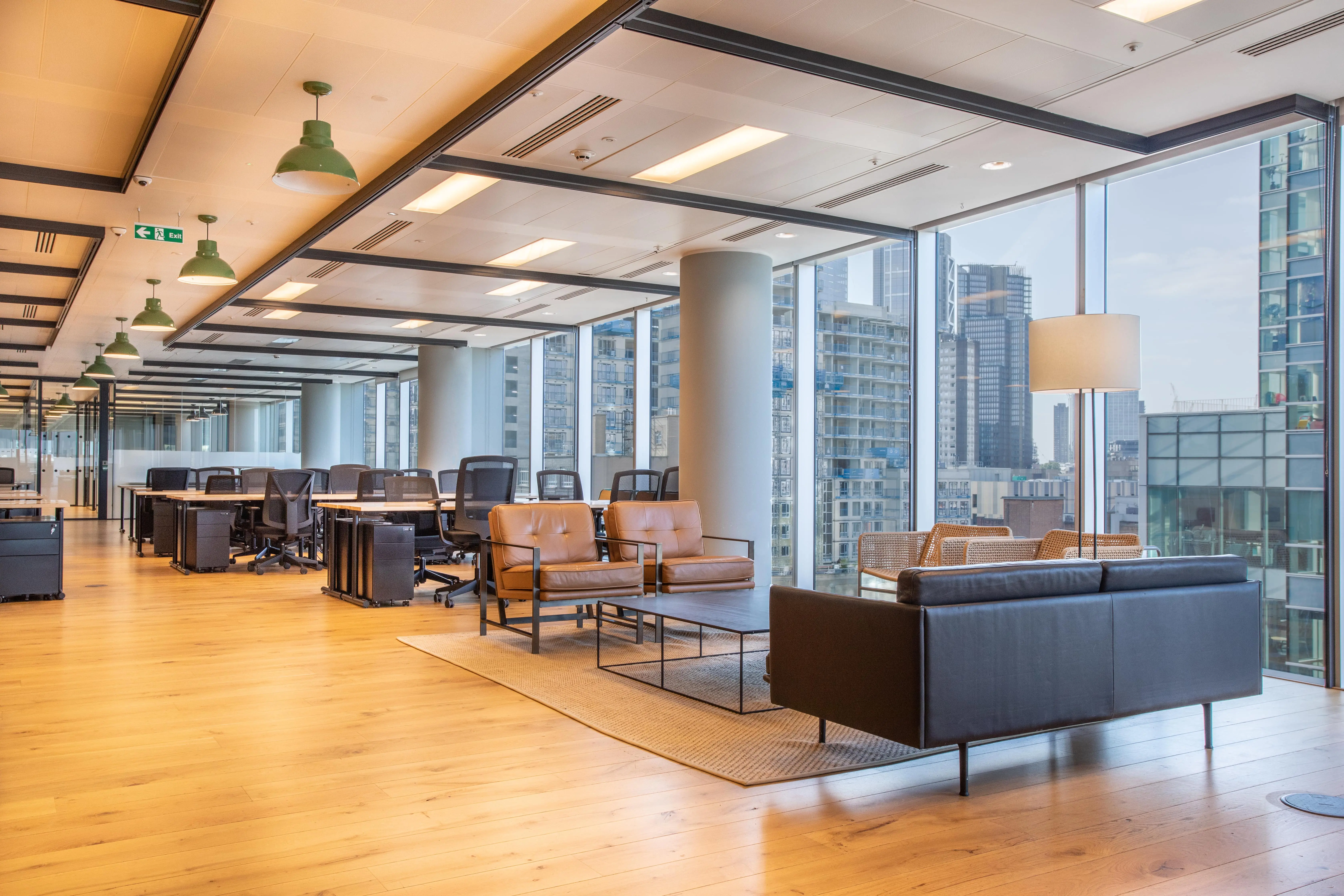Choosing the right home for your team is a big decision for any company. For certified and aspiring B Corps, the stakes feel even higher. Your space needs to back up your mission, cut carbon, support people and still be practical on cost and flexibility. The good news is that you can treat the office like any other part of your impact plan, with clear criteria and a simple process.
In this guide, we translate the B Corp mindset into everyday property choices. You will see which features to prioritise, how to use trusted building standards, and what to ask providers so the space works for your goals. If you want expert support while you explore options, our team can shortlist flexible office space across the UK that meets sustainability targets and your budget through flexible office space, and we can do it in a way that saves you time.
Key decisions do not need to slow you down. Whether you prefer serviced, managed or a flexible lease, you can compare buildings on real-world performance, negotiate green clauses and set up a smooth move. That way, your space works for your people from day one and supports your impact targets for the long run.
Key takeaways
- Define B Corp office space using clear, testable criteria
- Check B Corp office space for energy, fit out and wellbeing
- Use standards to compare B Corp office space with evidence
- Add green lease clauses to lock in B Corp office space gains
- A broker can shortlist B Corp office space fast and free
What a B Corp-friendly office space actually means
B Corp certification is awarded by B Lab to companies that meet high standards of social and environmental performance, transparency and accountability. Those values do not stop at your product. They show up in where and how your team works. If you are still learning the basics, you can use B Lab UK’s overview to understand the standard, then map the ideas to office decisions you control.
So what does that mean for offices? Start with outcomes. A B Corp-friendly office should lower operational carbon, protect health and wellbeing, support inclusive access and make transparent data easy to share. It should also help you prove progress year on year, not only at fit-out but in daily use.
Managed offices can be a strong match because you can tailor layout, materials and services while keeping flexibility on term and size. If you want that balance of control and speed, consider a managed office brief that lets you choose finishes and suppliers through managed office space, and ask providers to evidence the sustainability choices at contract stage.
How B Corp standards translate into property choices
B Corps often set science-based targets or net-zero plans, so choosing a building with efficient systems and honest performance data is key. A practical lens here is the UK Green Building Council’s net zero carbon framework, which helps you align both construction and operation with credible carbon rules, even if you are not yet certified.
Make a short list of must-haves mapped to your B Impact Assessment categories. For example, energy sourcing and metering support Environmental impact. Inclusive design and active travel support Workers and the Community. Lease transparency supports Governance. Capture these as yes or no checks so decisions stay simple.
The B Corp office space checklist: features to prioritise
The goal here is not a perfect building. It is a practical fit with clear progress built in. Use the sections below as your baseline.
Energy, carbon and utilities
Look for buildings with sub-metering so you can track your own consumption and share it in your impact report. Ask about the current EPC rating and planned upgrades. In England and Wales, the government sets minimum efficiency expectations for non-domestic rented property, and you can find the details in the official guidance, which helps you judge whether a landlord is ahead of the curve. Confirm how electricity is sourced, and if the landlord claims renewables, request the supply contract summary and whether Energy Attribute Certificates are used in line with accepted reporting rules.
Fit out, refurbishment and circularity
Ask providers to show material choices for any planned works, including recycled content, formaldehyde-free boards, low-VOC paints and furniture reuse routes. Check if they can disclose waste diversion rates during strip-out and whether they work with remanufacturers. Managed formats such as managed office space often give you more say in product selection and end-of-use plans, which support both footprint and cost control. If a full refurbishment is already complete, request a list of materials and certificates so you can verify the claims.
People, health and well-being
Good air, daylight, acoustic comfort and inclusive amenities pay off in retention and focus. Many UK landlords now organise features around the WELL Building Standard, which structures action across air, water, nourishment, light, fitness, comfort and mind, and gives you a shared language for questions during viewings. If the space is serviced, review how desk density, meeting rooms and quiet zones are managed. Ask for indoor air quality data, filtration types and maintenance schedules. For cycling, look for secure storage, showers, drying rooms and nearby segregated routes.
Governance, data and transparency with your landlord
For B Corps, data sharing is not a nice-to-have. You need monthly utilities, waste weights and recycling rates at a minimum. Build this into the heads of terms. You can point to the Better Buildings Partnership’s Green Lease Toolkit as a model, then adapt the clauses so reporting flows to your sustainability and finance teams without friction. Clarify who owns which meters, what you can sub-meter and how reports will be shared. Add a simple governance cockpit in your onboarding plan so facilities, finance and sustainability all see the same numbers.
Community access, inclusion and transport
Location counts. Prioritise walkshed or cycleshed access to public transport, step-free entry, prayer and wellness rooms, and a thoughtful visitor journey. If your mission includes local hiring or volunteering, choose a building and neighbourhood that supports it with safe access, open hours and community partnerships. Serviced buildings often bundle end-of-trip facilities that encourage active travel, which reduces commuting emissions and improves wellbeing.
Day-to-day operations and suppliers
Serviced spaces bundle cleaning, catering and security. Check supplier policies, fair pay, chemical choices and packaging. Ask how out-of-hours energy is managed, whether sensors control lighting and HVAC and what the default temperatures are. For managed space, plan a simple playbook that sets cleaning chemicals, bin placement, print rules and kitchen equipment. Keep the playbook short, and build it into onboarding so habits stick.
Certifications and ratings that help you compare options
Standards will not write your impact report, but they do help you compare buildings and set expectations with providers. Focus on two groups.
Building-level: BREEAM, NABERS UK and EPCs
Investors and occupiers widely recognise BREEAM, which rates the environmental performance of buildings and fit-outs from Pass to Outstanding, and gives you a broad view across topics such as energy, water and materials. For operational energy, the clearest view comes from NABERS UK, administered by CIBSE, since it measures how an office actually performs for Base Building, Tenancy or Whole Building scopes. EPCs are still required at least and provide a design-based efficiency rating, so use them as a minimum compliance check while you rely on in-use data for real performance.
Occupant-level: WELL and in-use performance
WELL certification focuses on health and well-being, and you can still use WELL features as a checklist even if an asset is not certified. Ask for recent IAQ readings, lighting plans and acoustic treatments, then pair formal credentials with your own in-use metrics such as staff survey scores, absence trends, desk utilisation and complaints logged. These help you refine the space after move-in and form part of your public impact reporting.
How we help B Corp teams choose well and move fast
B Corps often run lean teams. You may not have time to scan the market, review specs, request data and line up tours. That is where a specialist broker adds real value. We can shortlist buildings that meet your sustainability criteria, request evidence and negotiate green clauses as standard. If you are browsing formats, you can use our serviced office guide to weigh speed and flexibility through serviced offices, then compare that with a managed solution if you want more control.
Our approach is people-first and hands-on, from the first call through to move-in. We combine broad market access with a focus on your team’s wellbeing and growth, so the office supports performance and culture, not just cost. If you want to sense-check what forward-thinking occupiers are doing this year, our look at office space trends explores how sustainability and smart systems are reshaping fit outs and operations through office space trends.
A simple selection workflow that your team can use this month
Start with a focused brief. List must-haves for energy, wellbeing, access and data. Share your net-zero targets so providers understand the plan. If you do not have a formal target, state your current carbon baseline and short-term goals so options can be sized properly.
Next, shortlist three to five buildings. Ask for EPC, any BREEAM or WELL documentation and, if available, NABERS UK ratings. In parallel, request the last 12 months of base-building energy data and any tenant sub-metering data for a similar floor plate. For flexible formats, ask the operator for anonymised energy intensity ranges for comparable suites. If you want to build a smart brief, you can start with our smart office guide on workplace tech and monitoring, through what a smart office is, then request only the data you plan to use.
Finally, lock in collaboration through the lease. Agree on metering, data sharing, energy management and fit-out standards before you sign, and reference the BBP Green Lease Toolkit as a shared source so both sides are clear on expectations during the term.
Conclusion: your space can power your impact
A B Corp office is not a badge on the door. It is a set of choices about energy, materials, wellbeing and transparency that show up every day. With a clear checklist and the right partners, you can find a flexible space that supports your team and your targets, then keep improving with real data.
If you are ready to compare options, our experts can curate a shortlist that meets your sustainability goals, budget and timeline. You can start with a location search, such as the City of London, which offers a range of high-performing buildings.
FAQs
What is the difference between a B Corp and a green building?
A B Corp is a company certified by B Lab for meeting high standards of performance, transparency and accountability. A green building is a property that meets certain environmental or wellbeing standards. B Corps can lease green buildings, but certification relates to the business, not the building itself. For the basics, many teams start with B Lab UK’s explanation of B Corps, then pull out the parts that link to property choices.
Which certifications should I prioritise when comparing offices?
Use a mix for balance. You get broad environmental coverage from BREEAM, a clear read on operational energy from NABERS UK, a legal baseline from EPC, and a wellbeing focus from WELL, and together they help you compare like for like.
Do minimum energy rules apply to offices in England and Wales?
Yes. Non-domestic private rented property must meet a minimum of EPC band E, subject to specific exemptions, and the detail sits in the government’s official MEES guidance, which landlords should be ready to share.
Can a serviced office work for a B Corp?
Yes. Many operators now use cleaner power, better materials and clear data sharing. Ask for evidence, request green clauses and check wellbeing features. For an overview of the format, you can compare costs and benefits using serviced offices, then shortlist buildings that fit your goals.
How do I make sure my lease supports sustainability reporting?
Bake collaboration into the contract. Metering rights, data sharing and shared goals should all be set out before you sign, and the model wording in the BBP Green Lease Toolkit gives both sides a head start.
















